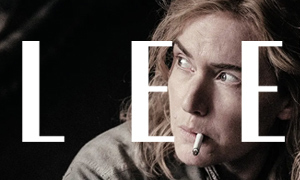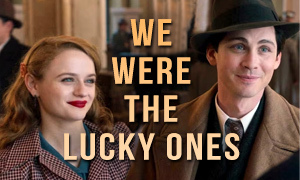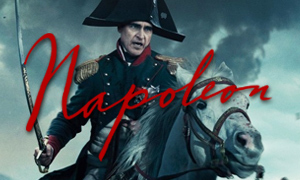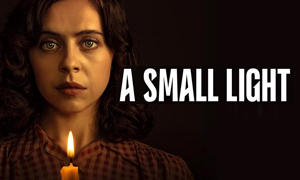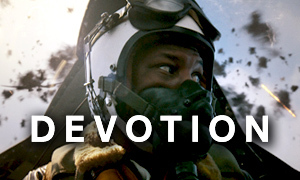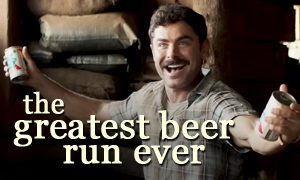Is Top Gun: Maverick Realistic? The Planes, The Pilots, The Plot
Is Top Gun a real school?
Yes. "The real Top Gun is just a nickname for what's called the United States Navy Fighter Weapons School," says Dave Berke, former Top Gun fighter pilot and senior instructor. The school has been in existence since 1969. "It's just a school that teaches kind of a graduate-level capability for fighter pilots to be ready for war." Berke says that the school got the nickname "Top Gun" because it was more about gunnery in its early days. It was not only about being able to use the airplane correctly but being able to use the gun on the plane well. The name Top Gun stuck and it became cemented in the public consciousness with the release of the first movie in 1986. -Jocko Podcast
Who gets selected to go to Top Gun?
In researching how realistic is Top Gun: Maverick, we discovered that to attend the U.S. Navy Fighter Weapons School, you indeed have to be the best of the best in a fighter jet. "You have to be in the top tier of your squadron," says retired instructor Dave "Chip" Berke. "There are some things you have to work at, some timing, some other things beyond your control." Berke says that while the pilots don't get ranked, there's definitely a tier you need to be in, as well as some certifications you need to have. "You need to be towards the top of your peer group to be selected." -Jocko Podcast
Why do they fly F-18s in Top Gun: Maverick and not newer fighter jets?
The movie tries to justify the use of the older F-18 Super Hornets over the newer F-35s by stating that the F-35's GPS weapons can't be used in a GPS jamming environment. Former Top Gun pilot Dave Berke says that while this reasoning was clearly included so that the filmmakers could use F-18s, the justification given in the film is "certainly plausible enough to explain why they're doing it the way they did it," especially when looking at it through the lens of it being a movie. All of Top Gun: Maverick's jets are displayed below, including the movie's Darkstar reconnaissance jet. The P-51 Mustang is also displayed. -Jocko Podcast
Another reason that F-18 Super Hornets are the jet of choice in the movie and not F-35s is because there are no two-seat F-35s. They needed to have two people in the airplanes for the filming, the actors and the highly-trained Navy pilots.
Are Top Gun pilots Navy or Air Force?
"It's almost exclusively now, mostly Navy, a couple of Marines," says former Top Gun instructor Dave Berke, who was himself a Marine. He said that "once in a blue moon" they used to have an exchange program with the Air Force.
Does the Top Gun school primarily teach dogfighting?
"Amongst other things, yes," said former instructor Dave Berke, "but [dogfighting] is the foundational thing you start to teach and learn up there." Berke said that on a good day at Top Gun, he would participate in approximately two dogfights with each flight lasting about 45 minutes total. Of that 45 minutes, "you're probably 25-ish minutes per flight like under G, like really maneuvering and bending the jet around." -Jocko Podcast
As a Top Gun instructor, would Maverick be that much better than his students?
Yes. In the movie, Maverick obliterates his students in dogfights. In exploring the question, "Is Top Gun Maverick accurate?" we discovered that while this may seem a bit unrealistic, it's actually in line with reality says Dave Berke, former Top Gun senior instructor. "The most proficient instructor is significantly better than the most proficient student," adds Berke, "like a big, big, big difference." Instructors have engaged in many more dogfights and have a lot more experience. What we see in the movie is a realistic depiction.
How does a pilot get selected to be a Top Gun instructor?
Unlike Navy pilots, Marine pilots go back to their squadrons and usually deploy after completing the 13-week Top Gun course. Navy pilots who are going to be selected as instructors typically stay behind at the school to teach. At some point, the Top Gun staff will vote on which Marine pilots to bring back. "There are only three pilots on the staff of 25 who are Marines," says Dave Berke, former Marine fighter pilot and senior instructor at the school. -Jocko Podcast
Are the personalities of the pilots in the movie over the top?
To some degree, yes. In researching the question, "Is Top Gun: Maverick realistic?" we confirmed that the personalities of the pilots in the movie are intentionally magnified and somewhat over the top due to the fact that they have to stand out in a two-hour movie. "In some sense, I didn't have a lot of experience with people whose personalities were that over the top in some ways," says former Top Gun pilot and instructor Dave Berke, "but I can identify and resonate with every single one, so I think in that sense they still did a good job depicting ego, complacency, and a bunch of other subtle attributes you really gotta think about in order for someone to be successful in difficult situations." -Jocko Podcast
Is Penny ringing the bell at pilots in the bar something that happens in pilots' clubs and bars?
Yes. Penny (Jennifer Connelly) ringing the bell in the bar and penalizing the pilots for various infractions is a real thing that happens at officers' clubs and bars. Some of the things that might trigger the bell to be rung is wearing your hat in the bar, putting your phone on the bar, getting a call from your wife, going behind the bar, etc.
Are there any F-14s still flying?
In researching how accurate is Top Gun: Maverick, we learned that there are no F-14s still flying in the West. The F-14 Tomcat was retired by the United States Navy in 2006. The only country that still flies them is Iran, which currently has six Tomcats. The filmmakers found an F-14 on display at the San Diego Air and Space Museum. They had it shipped to an airfield near Lake Tahoe where several scenes with the plane were shot. Though it didn't have an engine, "it needed to be operational enough that the [cockpit] canopy opens," said Jeremy Hindle, the production designer on the film. Unlike with almost all of the other Top Gun: Maverick fighter jets, the in-flight scenes were created with CGI. -Variety
Contrary to what's seen in the movie, there has never been an issue with an ejection seat not working in an F-14. -Jocko Podcast
Is it common for a birdstrike to take down a fighter jet?
No. "It's not common for a birdstrike to snuff out a motor like that," says Dave Berke of the scene in the movie, "but it has absolutely happened. It is very uncommon. Birdstrikes are not that uncommon. For a birdstrike to get you to crash the airplane, very rare, but not unheard of." Generically speaking, the pilot in the movie follows the correct procedures for handling a birdstrike, despite losing the plane.
In early June 2022, a Canadian CF-18 struck a bird at an air show in Michigan. Although the plane lost one of its engines, the pilot was able to land safely. Birdstrike was recently depicted in the 2016 true story movie Sully directed by Clint Eastwood and starring Tom Hanks as the captain of an Airbus A320 that strikes a flock of birds, damaging both engines. -Jocko Podcast
Are fighter pilots issued aviator glasses?
Yes. The aviator sunglasses we see in the Top Gun movies are actually a standard issue accessory given to fighter pilots. Former Marine pilot Dave Berke says that he used to wear them all the time but has since outgrown them. However, he did break them out to attend the Top Gun: Maverick premiere.
Is Darkstar a real plane?
No, at least not yet. In the movie, Capt. Pete "Maverick" Mitchell (Tom Cruise) serves as a test pilot for a next-generation hypersonic fighter jet called Darkstar. While it is not a real plane, it was clearly inspired by the SR-72, Lockheed Martin's concept jet that the company proposed in 2013. The SR-72, nicknamed the "Son of Blackbird," is the successor to the Lockheed SR-71 Blackbird, the high-altitude, long-range Mach3+ strategic reconnaissance aircraft. The company planned to have a working SR-72 test plane ready to fly by 2025, so it's not far-fetched for such a plane to exist in the movie. In fact, Lockheed Martin engineers helped design the plane seen in the film. Of the Top Gun: Maverick jets, it is the only one that is not a real-world plane.
Are aviator jackets standard issue?
Yes. The iconic leather aviator jackets seen in the films are standard issue fighter pilot jackets. To have patches on the jackets is also common.
Are the physical aspects of being a fighter pilot depicted accurately?
Yes. "The reality is it's not like this all the time, but flying fighters is exhausting sometimes, like very physically demanding," says former fighter pilot Dave Berke. "There are components of flying that physiologically are really, really hard, and I think they wanted to depict those segments." Berke says that the difficulty isn't usually as sustained as it is in the Tom Cruise movie, pointing out that some elements of flying are "downright boring," including navigating to and from, in which case you're just sitting in a cockpit. The mind-blowingly difficult moments that are very physiologically demanding usually last a few minutes. -Jocko Podcast
Is the flying in Top Gun: Maverick realistic?
"A lot of the flying, ninety percent of it, was realistic," says former Top Gun pilot and instructor Andy "Grand" Mariner. "It wasn't the crazy stuff from the first [movie]. I think I appreciate that. I know 'cause I was in Fallon when they were doing the filming to see that they were actually going out and flying every day so that the filming was realistic."
In the first movie, except for Tom Cruise, there was no useable footage of the actors flying that made it into the film (they'd get sick or begin to succumb to the g-forces). More on the flying will be addressed below when the mission is analyzed. -The Fighter Pilot Podcast
What is "afterburner"?
In the Top Gun: Maverick movie, we see orange flames shooting out of the back of the F-18s at times, including during takeoff from a carrier. This is called afterburner. "The technique behind afterburner in general is [when] you're flying around in a regular engine it just spins and puts out thrust," says Dave Berke. "Afterburner is where they take literally liquid fuel and they spray it in the back so it kind of creates a mini-explosion and just shoots an orange flame out the back, but it gives the jet a whole bunch of additional thrust." It can give you a significant amount of extra speed, which can be especially crucial during takeoff and maneuvering in flight.
How much more power does afterburner give an F-18 Hornet? In full power without afterburner (referred to as military power), an F-18 Hornet's engine can achieve just under 11,000 pounds of thrust. In afterburner (maximum power), the engine can achieve about 18,000 pounds of thrust, a significant boost.
Would Maverick have been able to steal an F-18?
In researching the question, "Is Top Gun: Maverick believable?" graduates of the U.S. Navy Fighter Weapons School have pointed out that base security would most likely prevent anyone from actually stealing an F-18 or any other fighter jet. However, they do believe that the scene in the movie is plausible given that there are no keys needed to start up an F-18 and fly off with it.
Is G-LOC a real thing?
Yes. G-LOC, which stands for g-force-induced loss of consciousness, is a real thing. However, in answering is Top Gun: Maverick accurate, former Top Gun instructor Dave Berke says that G-LOC isn't quite as common in the F-18 as it is in some other airplanes, like the F-16, which is the most notorious G-LOC plane. Technology has been introduced to help prevent G-LOC, which in the past resulted in the loss of both pilots and planes.
Are mission briefings ever held in hangers?
In the movie, we see a large group of pilots gather in a hanger for a briefing. "No," says former Top Gun pilot Jim "Jambo" Ray. For one, it's going to be noisy in a hanger, especially on an aircraft carrier, which is always noisy. In addition, a hanger is not a secure place to discuss a secret mission. Ray says it's pure Hollywood. -The Fighter Pilot Podcast
Is the mission at the end of Top Gun: Maverick realistic?
Yes. "That whole mission at the end, every segment of that mission is things that I do routinely and what pilots do routinely in F-18s on a regular basis," says former senior instructor Dave Berke. "And not like Top Gun pilots, just any pilot as a routine series of pieces of a mission that you would do." This includes the low-level ingress (to avoid radar), the high-G pop, the really high climb acceleration, the rolling on your back, the high-G turn, etc.
Berke says that rolling the plane on its back to transfer from nose up to nose down is a necessary maneuver to avoid a high dose of negative g-force, which, unlike positive g-force, the body cannot be trained to tolerate. By rolling on your back, the g-force is applied in the right direction (positive g-force), which pilots are trained to handle. In the Top Gun: Maverick movie, they do the maneuver as they come up over the ridgeline and go down toward the target. An additional reason for inverting the plane in that case is so they can see the target better after coming over the ridge.
What do real Top Gun pilots think of the movie?
"Dude, I thought it was awesome," former U.S. Navy Fighter Weapons School senior instructor Dave Berke told Jocko Willink. "I loved it. I also knew I was going to see a movie. So in terms of what I was thinking and my criteria for it, for the baseline I was expecting, dude, I thought it was awesome." Berke said that he wasn't as concerned with how they laid out the tactics and the forming. Rather, he was more concerned with whether they captured how it feels to be in the cockpit of a fighter jet, something he believes the film does very well. Berke was a consultant on the film and helped the screenwriters make sure the movie was authentic.
What type of training did the actors go through for Top Gun: Maverick?
The actors underwent four-and-a-half to five months of training, including flight lessons. Tom Cruise personally oversaw the training regiment. The actors had to become accustomed to the fundamentals of flight and the effects of g-forces. The Navy also conducted worst-case-scenario drills, which included training for being ejected over water. The actors were subjected to "the dunker," a device that lowered them into the water while blindfolded and strapped to a chair. They were then slowly flipped upside down and had to escape and swim to the surface.
Their physical abilities were tested in other ways, including being put in a pressure chamber. They also practiced to withstand g-forces in a centrifuge. When they did start in-flight training, they didn't just immediately jump in F-18s. They first went up in single-engine airplanes to build up their spacial awareness. Then they were put in L-39s for aerobatic training to get used to what it would be like in a bigger jet. Finally, they flew in the F-18 Super Hornets, the plane that dominates the film. On an interesting side note, two of the actors, Glen Powell and Jay Ellis, went on to receive their pilot's licenses. Powell also stars in the 2022 film Devotion in which he portrays a U.S. Navy fighter pilot during the Korean War.
Is Tom Cruise a pilot in real life?
Yes. Tom Cruise owns the P-51 Mustang that is featured in the movie. The $4 million WWII aircraft is still at times referred to as "Kiss Me Kate," a phrase he painted on the aircraft in red while married to actress Katie Holmes. As seen in the movie, he has since removed the phrase.
Who did the flying in Top Gun: Maverick?
Several highly-trained Navy fighter pilots did the flying for Top Gun: Maverick, including retired Navy Commander and former Blue Angel Frank "Walleye" Weisser, Tom Cruise's stunt double.
